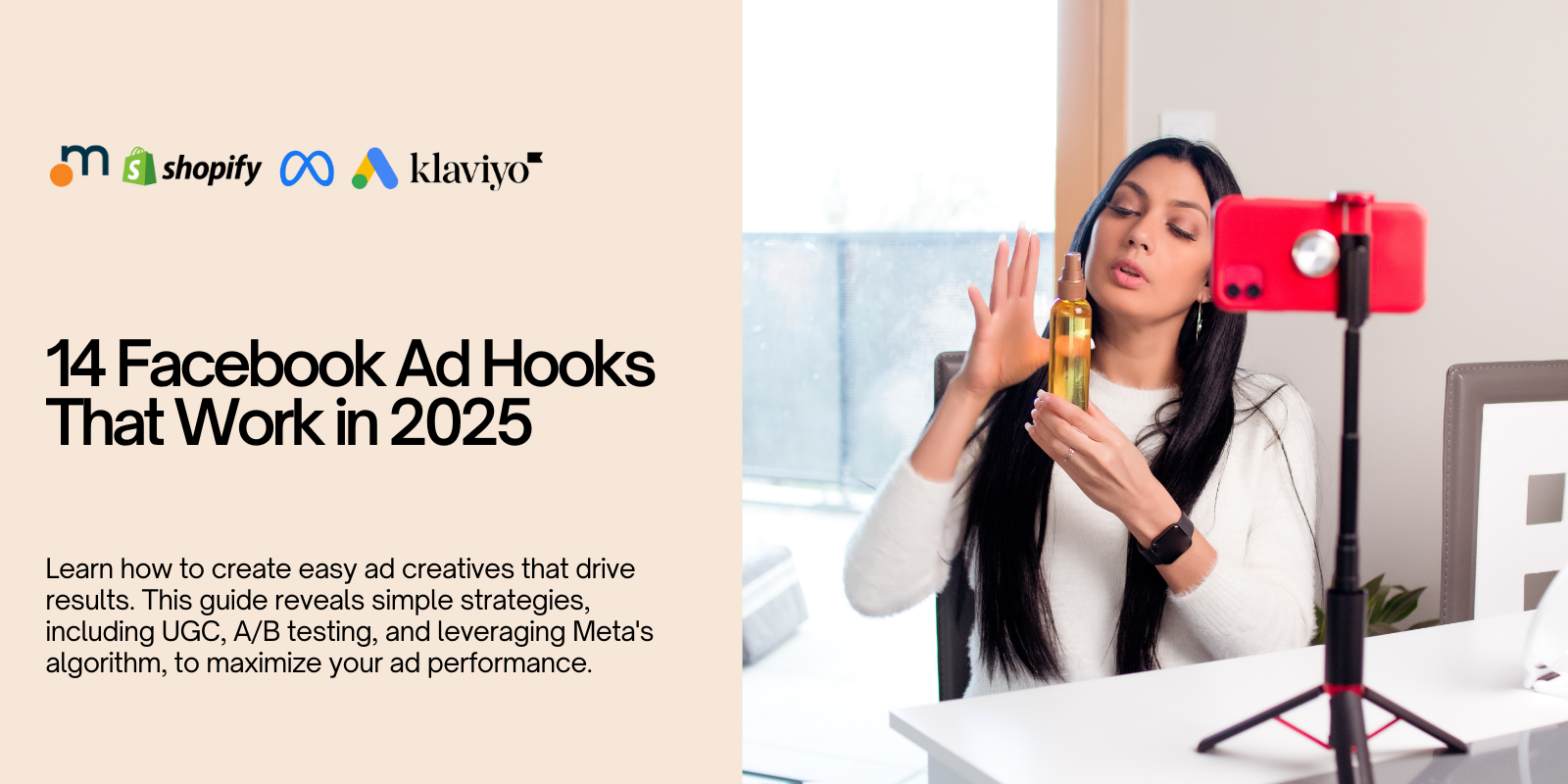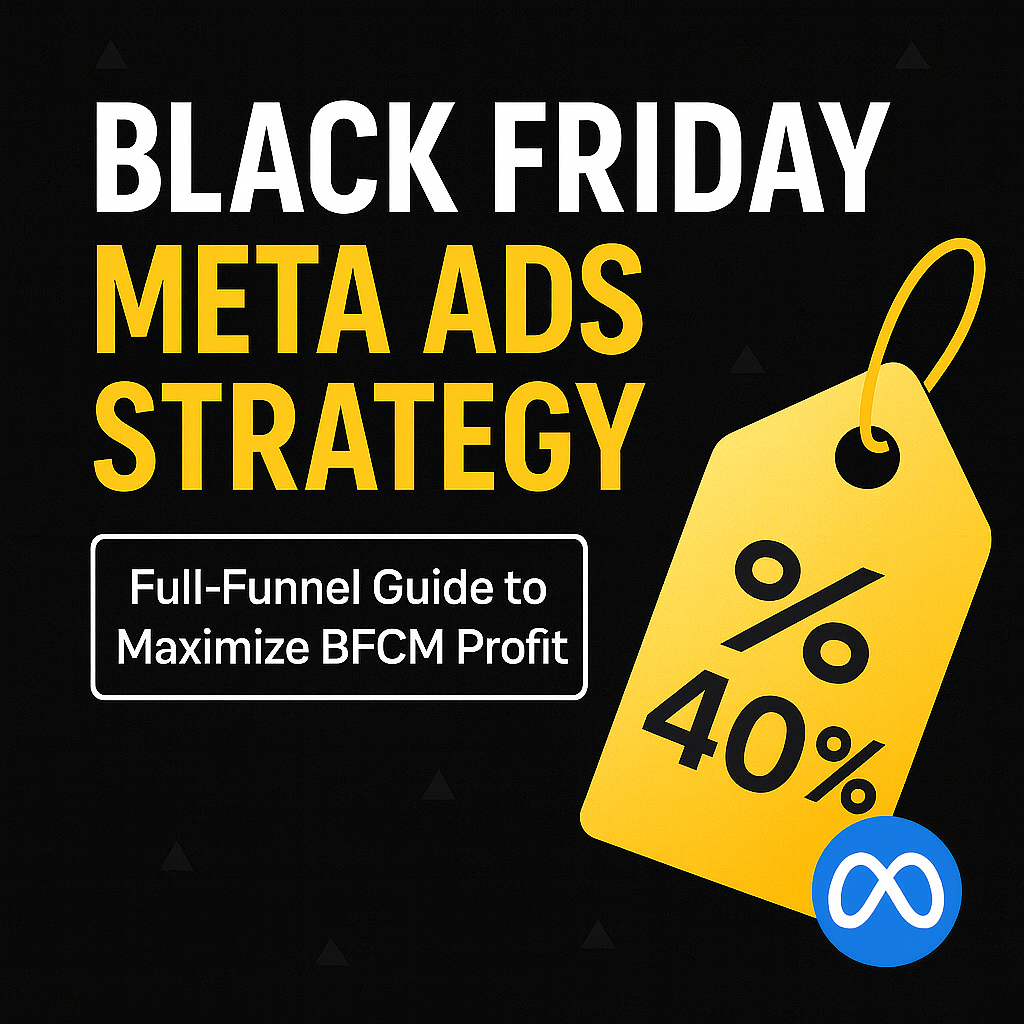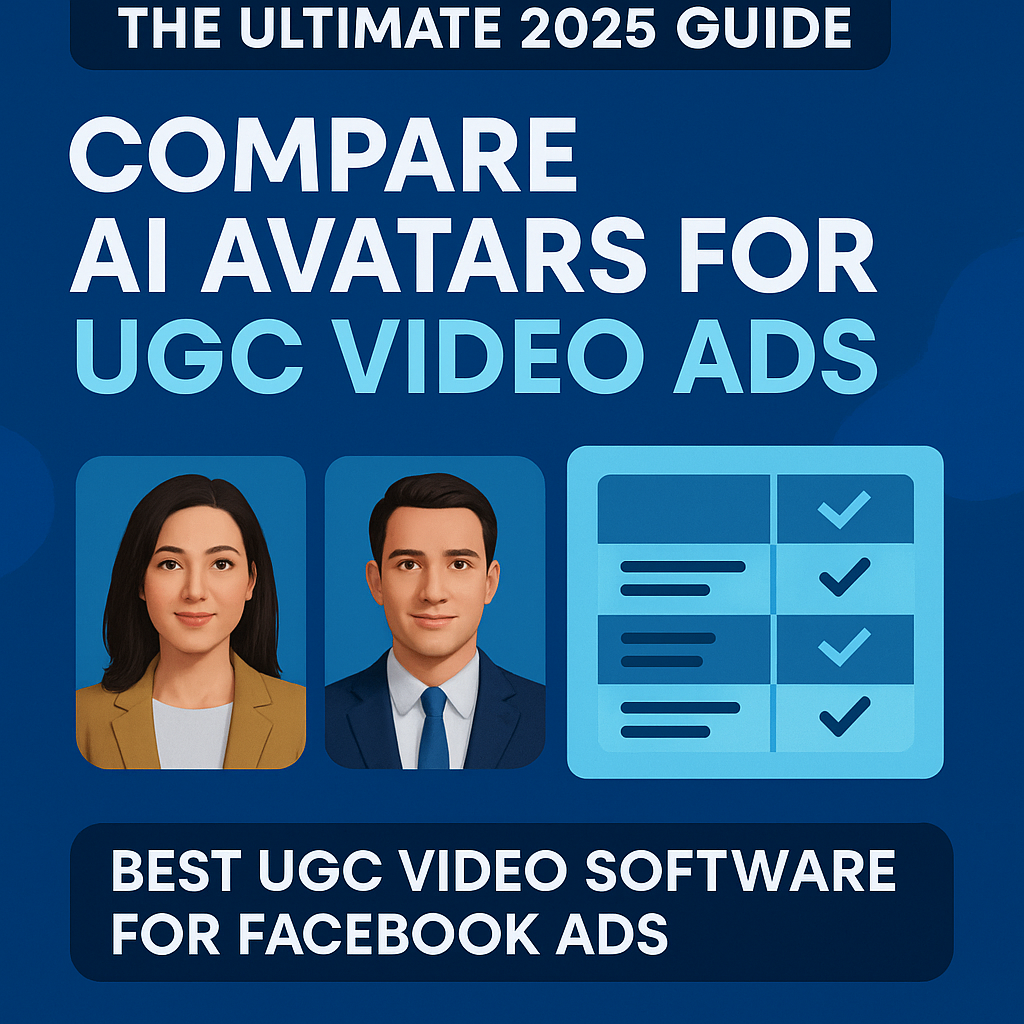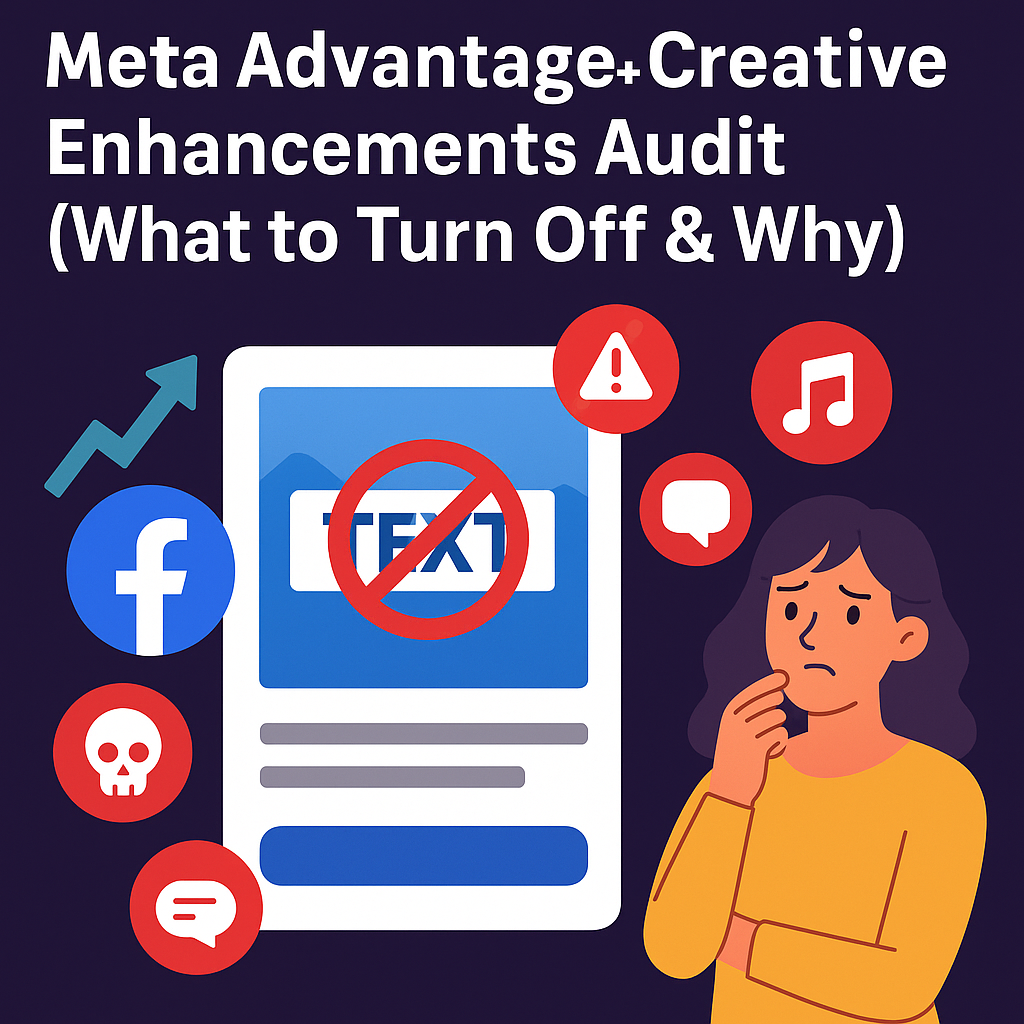In the whirlwind of today’s digital landscape, capturing your audience’s attention is no easy feat. With shrinking attention spans and an overwhelming influx of online content, DTC brands face the daunting challenge of cutting through the noise and making a lasting impression. On Meta platforms – Facebook, Instagram, and Reels – where users scroll through countless posts and ads in seconds, the first few moments are critical. This is where the power of the “hook” comes into play.
A compelling Meta ad hook is the digital equivalent of a captivating first impression. It’s the initial phrase, question, or visual that stops users mid-scroll and compels them to learn more about your brand and its offerings. In the fiercely competitive world of DTC marketing and Attention-Grabbing Ads, mastering the art of the Facebook ad hook can be the difference between a successful campaign and one that fades into oblivion.
In this comprehensive guide, we’ll delve into the intricacies of crafting high-converting Meta ad hooks that resonate with your target audience and drive tangible results. We’ll explore the latest trends, dissect real-world examples, and equip you with Ad Creative Best Practices and actionable strategies to elevate your Meta advertising game in 2025.

Table of Contents
What is a Meta Ad Hook?
A hook is like the cover of a magazine. It is the first thing people notice, and it determines whether they will pick it up or move on. A great Meta ad hook serves the same purpose. It captures attention instantly and sparks enough interest to make someone stop scrolling.
Like a bold headline or a striking image on a magazine cover, your hook must be visually compelling and emotionally charged.
On Meta platforms, where content moves quickly, a strong hook earns you that critical second look.
Whether it creates curiosity, excitement, or surprise, a compelling hook does more than interrupt the scroll. It draws people in.
That emotional pull transforms passive viewers into engaged prospects, making the hook an essential element in any successful ad campaign across Facebook, Instagram, and Reels.
How Long Should Your Meta Ad Hook Be?
You only have a few seconds to make an impression. On Meta platforms, those first two seconds are everything, especially for short-form video content like Reels. For mobile users, it’s often even less.
Just like a magazine cover has to grab attention at a glance, your hook must do the same. It should be short enough to be immediately understood, but clear enough to communicate exactly what your ad is about.
A strong hook doesn’t waste time. It respects the viewer’s attention and gets straight to the point.
Before you finalize your hook, ask yourself:
- Would this make me stop and look?
- Does it clearly convey value or intrigue in the first few seconds?
If the answer is yes, you’re heading in the right direction.
Why Meta Ad Hooks Are More Crucial Than Ever for DTC Brands
The Meta advertising landscape is constantly evolving. As we move into 2025, DTC brands face a unique set of challenges:
- Declining Organic Reach: Meta’s algorithms continue to prioritize paid content, making it increasingly difficult for brands to reach their audience organically.
- Rising Ad Costs: The competition for ad space is intensifying across Facebook and Instagram, driving up the cost of advertising.
- Shrinking Attention Spans: Users are bombarded with information, making it harder than ever to capture their attention and hold it long enough to deliver your message.
- Dominance of Short-Form Video: Platforms like Instagram Reels demand instant engagement, making the first few seconds of video (your hook!) paramount.
In this environment, a strong ad hook is not just a nice-to-have; it’s a necessity. It’s the first line of defense in the battle for attention, and it plays a pivotal role in determining the success of your Meta advertising campaigns.
The Data Speaks for Itself: Studies have shown that Facebook ads with compelling hooks achieve significantly higher click-through rates (CTR) and conversion rates. Every second spent on mobile devices is important. With mobile technology in our hands, we are consuming and recalling content faster than with any other device before. According to tests by the Fors Marsh Group, it only takes 0.25 seconds of exposure for people to recall content from mobile feeds at a statistically significant rate. Additionally, on Facebook’s News Feed, users spend an average of 1.7 seconds viewing a piece of content on mobile, compared to 2.5 seconds on desktop.
By mastering the art of the hook, DTC brands can:
- Capture Attention: Break through the clutter and stop users mid-scroll.
- Drive Engagement: Encourage users to interact with your ad and learn more about your brand.
- Increase Conversions: Ultimately, drive more sales and achieve your marketing goals.
- Improve “Hook Rate”: A key metric for Meta ad success (more on this below!).
The Power of Format: Different Types of Meta Ads and Their Hooks
While the core principles of an effective ad hook remain constant, the specific format of your Meta ad significantly influences how that hook is delivered and perceived. Understanding the strengths of various ad types—Video, User-Generated Content (UGC), and Static Image Ads—allows DTC brands to craft hooks that are optimized for maximum impact.
1. Video Ads: The Dynamic Hook
Video ads are arguably the most engaging format on Meta platforms, offering a powerful way to tell a story, demonstrate a product, or convey emotion. Their dynamic nature allows for visual and auditory hooks that can instantly captivate.
- What they are: Short-form or long-form videos that autoplay in users’ feeds.
- Hook Application: The first 2-3 seconds are paramount. This is where your video hook must instantly grab attention. This could be a dramatic visual, a compelling sound bite, a surprising action, or an intriguing question displayed as text overlay. Cliffhanger Hooks and Storytelling Hooks are exceptionally potent in this format, as are “Oddly Satisfying” or “Surprise” hooks that leverage motion and sound.
- DTC Tip: For product demonstrations, start with the most impressive “reveal” or benefit in the first few seconds. Show the desired outcome immediately.
2. User-Generated Content (UGC) Ads: The Authentic Hook
UGC ads leverage the power of social proof and authenticity. Content created by real customers, speaking directly to their experiences with your product, often outperforms highly polished brand creatives because it feels more genuine and trustworthy.
- What they are: Videos or images created by customers showcasing or reviewing your product. It often looks less “produced” and more organic.
- Hook Application:UGC hook ideas often revolve around relatable pain points, genuine excitement, or direct, unfiltered testimonials. A strong UGC hook might begin with a customer exclaiming about a problem solved, sharing a “secret” discovery, or showing a dramatic “before & after” using their own transformation.
- Examples of UGC hook ideas: “I can’t believe this actually worked!” (Problem-Solution), “My skin has never looked like this before” (Benefit-Driven), “This is the only [product] you’ll ever need” (Superlative), or a quick cut of a customer genuinely reacting to your product.
- DTC Tip: Encourage customers to start their videos or reviews with a strong, immediate statement about their initial impression or the problem your product solved for them. This creates built-in UGC hooks.
3. Static Image Ads: The Instant Hook
While lacking the motion of video, static image ads remain a cornerstone of Meta advertising. They demand an incredibly strong visual combined with concise, impactful text to stop the scroll.
- What they are: Single image or carousel ads.
- Hook Application: The hook here is a combination of a striking visual and the very first line of copy. “Number/Statistic” Hooks, “Question” Hooks, and “Short and Sweet” Hooks are highly effective. The visual must be scroll-stopping – high quality, emotionally resonant, or visually surprising.
- DTC Tip: Use lifestyle imagery that shows your product in use and highlights a clear benefit, then pair it with a text hook that addresses a pain point or offers an irresistible value proposition right away.
By strategically choosing the right ad format and tailoring your hooks to its unique characteristics, DTC brands can maximize their ad performance across the Meta ecosystem.
Understanding Your Meta Ad Hook Rate: The Key to Higher Conversions
Beyond general engagement, a crucial metric for measuring the effectiveness of your Meta ad hooks is the Hook Rate, also known as the Thumb Stop Ratio. This metric directly assesses how well your Attention-Grabbing UGC Videos and Static ads convert in those critical first few seconds.
What is Facebook Ad Hook Rate?
Hook Rate measures the percentage of people who stop scrolling and watch your UGC Video ad for at least 3 seconds (or longer, depending on your definition of a “viewable” impression). It’s essentially your ad’s ability to “stop the scroll.”
Why is Hook Rate Important?
Algorithm Favorability: Meta’s algorithm favors ads that generate high initial engagement. A good Hook Rate signals to Meta that your ad is relevant and interesting, potentially leading to broader distribution and lower costs. A high Hook Rate signals an Attention-Grabbing Ad.
Ad Spend Efficiency: A higher Hook Rate means more people are engaging with your ad’s core message, making your ad spend more efficient.
Foundation for Conversion: If users don’t stop scrolling, they can’t convert. A strong Hook Rate is the foundational step toward achieving higher CTRs and conversions.
How to Calculate Hook Rate in Meta Ads Manager:
While Meta Ads Manager doesn’t have a direct “Hook Rate” metric, you can calculate it by comparing “3-Second Video Views” (or longer view durations like 10-second views) to “Impressions.”
Hook Rate= 3-Second Video Views / Impressions ×100%
What’s a Good Hook Rate?
Industry benchmarks suggest:
- Average: 15-20%
- Good: 20-40%
- Excellent: 40%+ (some top-performing ads can even reach 50-60%!)
By monitoring and optimizing your Hook Rate, you gain a powerful, data-driven insight into your ad creative’s performance.
16 Meta Ad Hooks That Will Stop the Scroll in 2025
1. The Ultra-Personalized Hook:
In the age of personalization, generic ad copy simply won’t cut it. Consumers expect brands to cater to their individual needs and preferences. The ultra-personalized hook leverages dynamic ad creatives to tailor the message to each user’s interests and demographics.
Example: “Hey [Name], looking for the perfect [product category] for your [specific need]?”

Why it Works: This hook creates a sense of individual connection and addresses the user’s specific needs, making the ad more relevant and engaging.
2. The Interactive Hook:
Interactive content is a powerful tool for capturing attention and encouraging engagement. The interactive hook invites users to participate in polls, quizzes, or interactive elements within the ad itself.
Example: “Take this quiz to find your perfect skincare routine!”
Why it Works: This hook taps into the user’s desire for immediate gratification and provides a fun, engaging experience that encourages them to learn more about your brand.
3. The Short and Sweet Hook:
Brevity is key in the world of social media advertising. The short and sweet hook captures attention with concise, impactful statements or questions.
Example: “Tired of dull skin? We have the solution.”
Why it Works: This hook gets straight to the point, conveying the key message in a clear and concise manner that resonates with the user’s pain points.
4. The Storytelling Hook:
Humans are wired for stories. The storytelling hook uses the ad’s opening to begin a compelling narrative that resonates with the target audience.
Example: “It all started with a simple idea…”
Why it Works: This hook piques the user’s curiosity and draws them into a story that connects with their emotions and values.
5. The FOMO-Driven Hook:
Fear of missing out (FOMO) is a powerful motivator. The FOMO-driven hook creates a sense of urgency or scarcity to encourage immediate action.
Example: “Don’t miss out! Limited-time offer.”
Why it Works: This hook taps into the user’s desire to be part of something exclusive and motivates them to take action before it’s too late.
6. The Benefit-Driven Hook:
Consumers are ultimately interested in what’s in it for them. The benefit-driven hook clearly communicates the key benefits of the product or service in the hook.
Example: “Get 20% off your first order and free shipping!”
Why it Works: This hook provides a clear incentive for users to click on the ad and learn more about your offer.
7. The Community-Focused Hook:
Social proof is a powerful persuasion tool. The community-focused hook taps into this by highlighting user-generated content or testimonials.
Example: “Join thousands of happy customers who love [product name].”
Why it Works: This hook builds trust and credibility by showcasing the positive experiences of other users.
8. The “Question” Hook:
Curiosity is a powerful driver of human behavior. The question hook poses a thought-provoking question that resonates with the target audience’s interests or concerns.
Example: “Are you tired of feeling tired all the time?”

Why it Works: This hook encourages users to stop and consider the question, piquing their curiosity and drawing them into the ad.
9. The “Number/Statistic” Hook:
Numbers and statistics add credibility and impact to your message. The number/statistic hook uses data to highlight a key benefit or problem that your product or service addresses.
Example: “9 out of 10 dentists recommend [product name].”

Why it Works: This hook provides concrete evidence to support your claims and makes your message more persuasive.
10. The “Before and After” Hook:
Visuals are incredibly powerful in capturing attention. The before and after hook uses striking imagery to showcase the transformative power of your product or service.
Example: Show a before and after image of someone using your skincare product with a caption like “Transform your skin in just 7 days.”

Why it Works: This hook provides tangible evidence of the results your product can deliver, making it more appealing to potential customers.
11. The “Reverse Psychology” Hook:
This hook plays on the human tendency to resist being told what to do. It creates intrigue and encourages engagement by challenging the user or suggesting they might not be ready for what you offer.
Example: “Don’t click this ad unless you’re serious about growing your business.”

Why it Works: This hook piques curiosity and makes users feel like they’re in on a secret or exclusive opportunity.
12. The “Tension” Hook:
This hook creates a sense of mystery or intrigue by hinting at a hidden truth or problem. It uses words like “secret,” “dangerous,” or “forbidden” to create a sense of urgency and exclusivity.
Example: “The one ingredient your skincare routine is missing (and why you need it now).”
Why it Works: This hook taps into the user’s desire for knowledge and solutions, making them eager to learn more.
13. The “Surprise” Hook:
This hook disrupts the user’s expectations with something unexpected, humorous, or thought-provoking. It challenges the status quo and offers a fresh perspective.
Example: “Forget everything you thought you knew about [product category]. This changes everything.”
Why it Works: This hook grabs attention by challenging assumptions and offering a new or unexpected solution.
14. The “Cliffhanger” Hook:
This hook builds suspense by teasing something exciting and delaying the payoff until the end of the ad. It encourages users to watch the entire ad to uncover the reveal.
Example: “Wait until the end to see how this one product can transform your [problem area].”

Why it Works: This hook keeps users engaged and increases the chances of them watching the entire ad, leading to higher brand recall and potential conversions.
15. The “Controversial/Taboo” Hook:
This hook uses a bold statement or challenges a common belief to disrupt expectations and grab attention. It can be polarizing but highly effective for certain brands.
Example: “Why your [popular product category] is actually making your [problem] worse.” or “Most people do [common activity] wrong. Here’s why.”
Why it Works: This hook leverages shock value and curiosity. It positions your brand as an authority willing to challenge the status quo, drawing in users eager for a fresh perspective or hidden truth.
16. The “Oddly Satisfying/ASMR” Hook (Visual First):
While less about text, this hook relies on mesmerizing or soothing visual and auditory experiences in the first few seconds of a video. Highly effective for products with a tactile or sensory appeal.
Example: A slow-motion video of a perfectly applied skincare cream, a product being precisely unboxed, or a unique texture being manipulated, often with subtle sound effects. The accompanying text hook might be minimal like “Pure Bliss.” or “Just Watch.”
Why it Works: This hook taps into primal sensory enjoyment, creating an immediate, almost hypnotic stop-scroll effect. It’s highly shareable and memorable, especially on visual-first platforms like Instagram and Reels.
Meta and Facebook Ad Creative Best Practices
1. Know Your Audience:
The foundation of any successful ad campaign is a deep understanding of your target audience. Research their demographics, interests, pain points, and aspirations. Leveraging Meta’s Advantage+ Creative tools, which use AI to optimize ad variations, is becoming increasingly important for performance. This knowledge will enable you to craft hooks that resonate with their needs and motivations.
2. A/B Test Relentlessly:
Don’t rely on guesswork. A/B test different hooks to identify what works best for your specific audience and campaign objectives. Experiment with different wording, formats, and visuals to optimize your ad performance. Focus your A/B tests on:
- Single variable testing: Change only one element (e.g., the hook) at a time to accurately gauge its impact.
- The first 3-5 seconds of your video creative: This is crucial for Hook Rate.
- The opening line of your ad copy.
- Different visual elements (e.g., contrasting colors, emotional expressions).
3. Match the Facebook Ad Hook to the Visual:
Ensure consistency between your hook and the ad creative. The visual should complement and reinforce the message conveyed in the hook, creating a cohesive and impactful ad experience.
4. Include a Clear Call to Action:
Your hook should always end with a clear and compelling call to action (CTA). Tell users what you want them to do next, whether it’s visiting your website, making a purchase, or signing up for your newsletter.
5. Keep it Concise and Impactful:
Remember, you only have a few seconds to capture attention. Keep your hooks concise, impactful, and easy to digest. Avoid jargon or overly complex language.
Conclusion

In the ever-evolving world of Facebook advertising, mastering the art of the hook is essential for DTC brands to thrive. By implementing the strategies outlined in this guide, you can craft compelling ad hooks that capture attention, drive engagement, and ultimately, boost conversions.
Remember to continuously test and refine your approach, staying attuned to the latest trends and your audience’s evolving preferences. With a strategic and creative approach to ad hooks, you can unlock the full potential of Facebook advertising and achieve your DTC Advertising Strategies goals in 2025 and beyond.
Frequently Asked Questions
What’s the ideal length for a Facebook ad hook?
While brevity is key, there’s no one-size-fits-all answer. Aim for a Facebook ad hook that captures attention within the first 2-3 seconds of the ad, which typically translates to around 1-2 concise sentences. However, consider your target audience and the complexity of your message. For younger audiences or simpler products, a shorter hook might suffice. If you’re targeting a more discerning audience or promoting a complex product, a slightly longer hook with a clear value proposition might be more effective. Ultimately, prioritize clarity and impact over a specific word count.
How can I A/B test different Meta ad hooks?
Meta Ads Manager makes A/B testing a breeze. Create multiple ad variations with different hooks while keeping all other elements (visuals, targeting, etc.) consistent. Run these variations simultaneously, allowing Meta’s algorithm to gather data on their performance. Monitor key metrics like 3-second video views, engagement, and conversion rates to identify the winning Meta ad hook. Remember to test one variable at a time for accurate results. For example, don’t change both the hook and the image in the same test. Tools like MagicBrief can provide deeper insights into competitor strategies and audience preferences, further informing your A/B testing process.
What are some common mistakes to avoid when writing UGC ad hooks?
Avoid these pitfalls that can sabotage your ad’s effectiveness:
– Being too generic or vague: “Shop now!” or “Get the best deals” lack specificity and fail to pique interest.
– Using clickbait tactics: Misleading or exaggerated claims can damage your brand credibility and lead to negative user experiences.
– Ignoring your target audience: A hook that resonates with one audience segment might fall flat with another. Tailor your message to your ideal customer’s needs and interests.
– Forgetting the call to action: A compelling hook without a clear CTA leaves users unsure of what to do next. Guide them with a specific action, whether it’s “Shop Now,” “Learn More,” or “Sign Up.”
Where can I find more inspiration for Facebook ad hooks?
Don’t reinvent the wheel! Draw inspiration from various sources:
Competitor analysis: Study the ad creatives of successful competitors in your niche. Identify patterns, test similar approaches, and find ways to differentiate yourself.
Industry publications: Stay updated on the latest trends and best practices in DTC Advertising Strategies and Facebook advertising through resources like eMarketer, Neil Patel’s blog, and industry-specific newsletters.
Social listening tools: Monitor conversations on social media to understand your audience’s language, pain points, and desires. This can spark ideas for hooks that resonate with their needs.
Creative communities: Engage with online communities of marketers and copywriters to share ideas and get feedback on your ad hooks.
How can I ensure my ad hooks are mobile-friendly?
Given that the majority of Facebook users access the platform on mobile devices, optimization is crucial:
Keep it concise: Mobile users have limited screen space and shorter attention spans. Front-load your key message and use concise language.
Prioritize strong visuals: Eye-catching images or videos are essential UGC Hook Ideas to grab attention on mobile. Ensure your visuals comply with Ad Creative Best Practices and are of high quality, optimized for mobile viewing.
Use clear formatting: Employ bullet points, emojis, or bold text to break up the text and make it easier to scan on smaller screens.
Consider vertical video: Vertical videos take up more screen real estate on mobile devices, maximizing impact and engagement.
How often should I update my Facebook ad hooks?
To combat ad fatigue and maintain audience interest, refresh your ad creatives, including your hooks, every 1-2 weeks. However, the optimal frequency depends on factors like your campaign budget, audience size, and ad frequency. Monitor your ad performance closely. If you notice a decline in CTR or engagement, it’s a sign that it’s time for a refresh. A/B testing new hooks can help you identify fresh approaches that resonate with your audience and keep your campaigns performing at their best.




